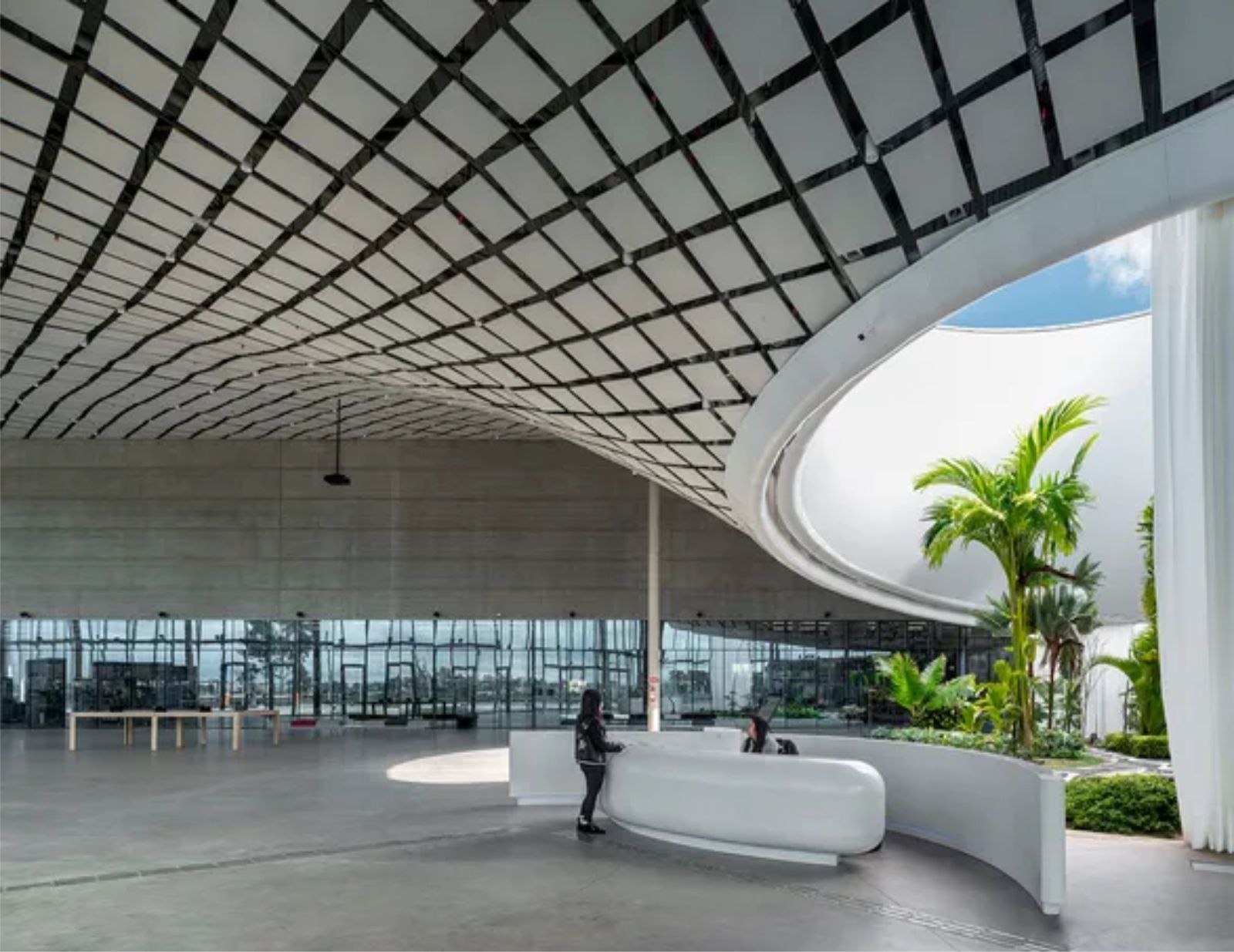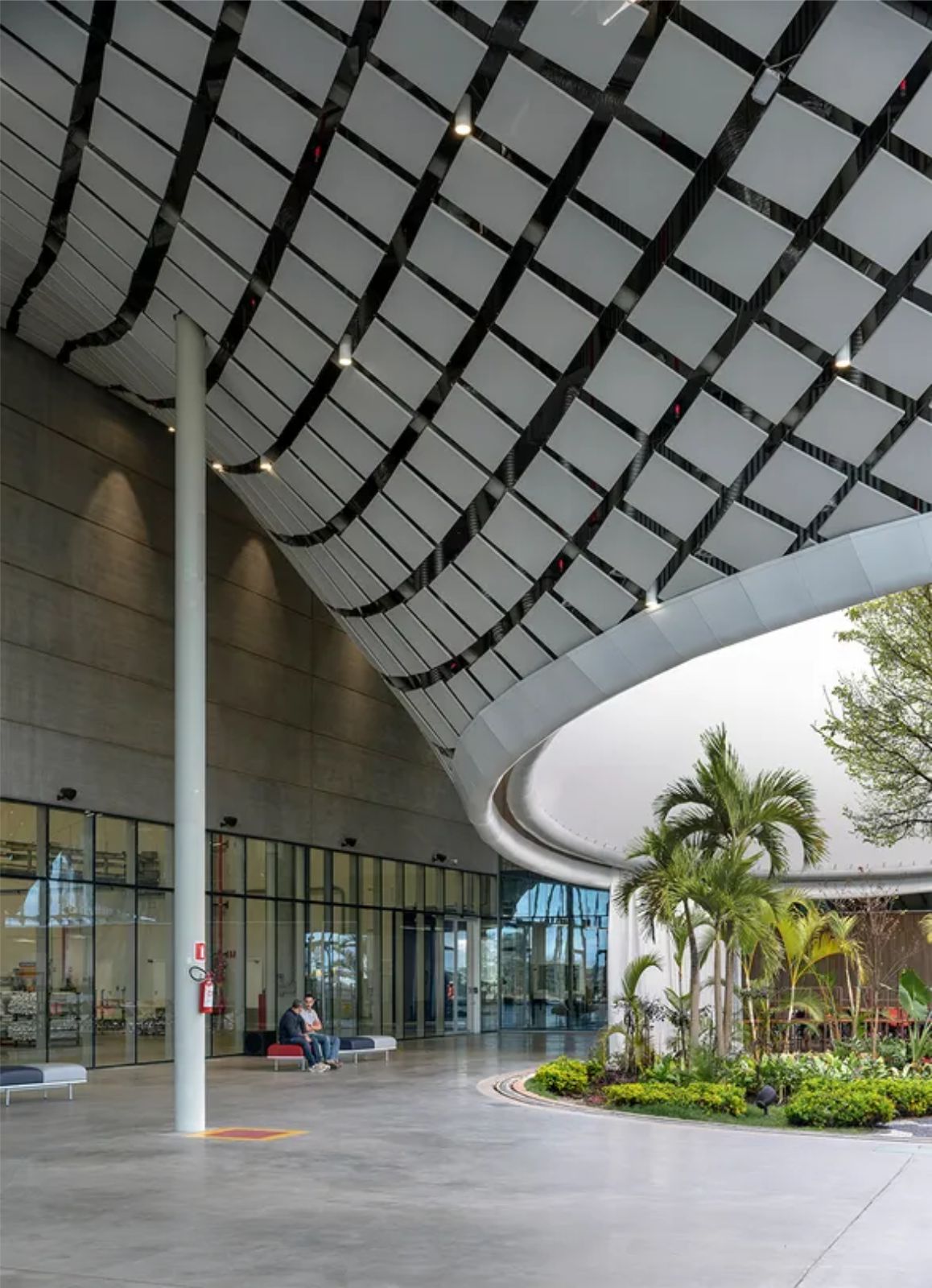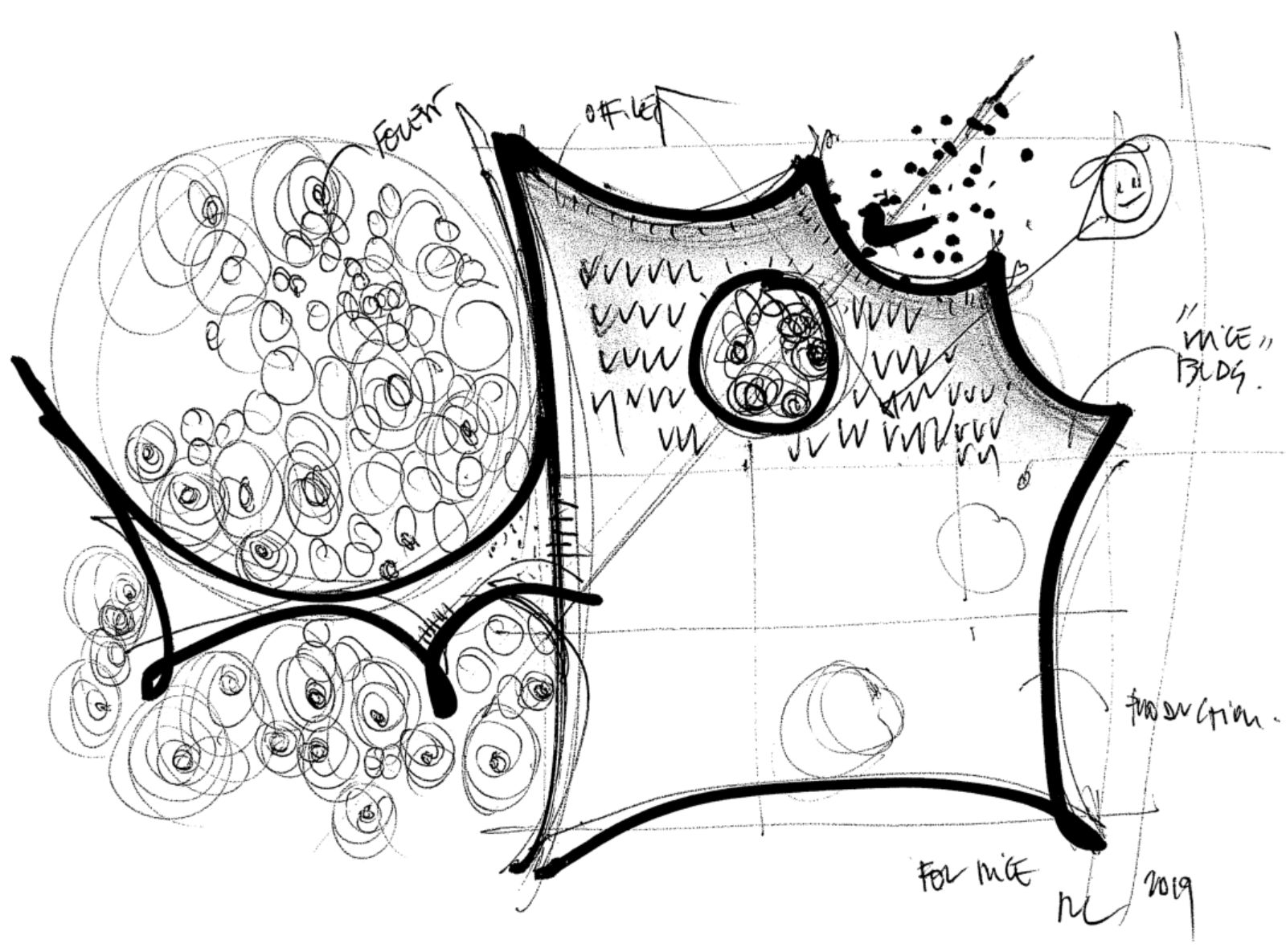Nice, a global leader in Home & Building Management and Security, inaugurated its new Brazilian headquarters. The architecture of the building attains its objective of revolutionising the idea of what a manufacturing space should be by replacing the image of a closed, compact structure with one of maximum openness and permeability, able to create a dialogue with the local community and the environment.
A design that interacts continuously with the surrounding landscape, reinterpreting traditional Brazilian architectural elements and (precisely because of the architecture of the building) encouraging the users to exploit all the passive environmental characteristics and re-establish a symbiotic relationship between built space and nature. In addition to serving as the new Brazilian headquarters for Nice, the complex also houses one of the Group’s International Research & Development Centres.

The 20,000 square metre building is a true benchmark of sustainable industrial architecture: designed to achieve LEED certification, it was conceived as a smart factory based on the principles of Industry 4.0. A new manufacturing approach that uses new technologies to provide improved working conditions, create a sustainable business model, and increase the efficiency and production quality of factories.
The design of the roof is inspired by the shape of a tropical leaf resting gently on slender columns, protecting the existing vegetation, and offering shade to all the functions underneath it. The principal frontage facing the main public road is brightly lit by natural daylighting and is the characterising feature of the project. The interior contains two floors of offices with common areas and spaces dedicated to training, showrooms, and the atrium, under a cantilevered roof.
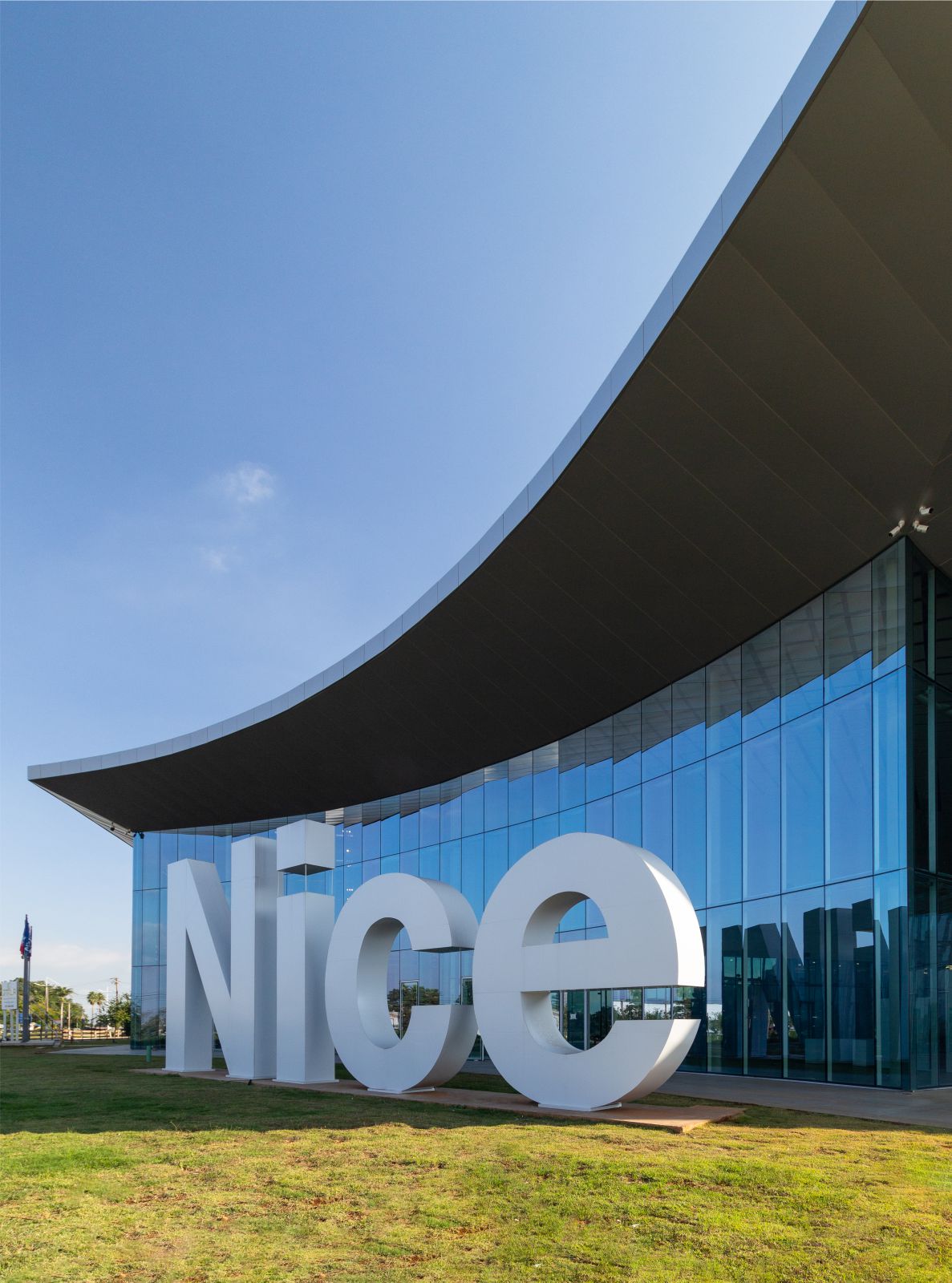
Through a large window in the atrium, visitors can watch the activities in the manufacturing area at the rear (as in a show-factory). In addition to the areas for production there is an annex for the employees, which is accessed via a network of high-level walkways leading through the forest; the facilities include an outdoor kitchen for making the traditional churrasco grill.
The headquarters of Nice Brazil was constructed in line with the Energy Policy adopted globally by the Group, in accordance with specific guidelines that promote energy efficiency and environmental awareness in all activities including the management of buildings, the mobility of people, and the development of products.

Beginning from a preliminary mapping of the company’s carbon footprint, carried out in 2021, Nice has in fact set itself the goal of reducing CO2 from energy consumption by 50% by 2025 and to achieve zero CO2 emissions by 2030. These targets outline a reduction trajectory that is consistent with international targets to keep global warming below 2°C.
From the exterior to the interior, the headquarters building is strongly linked to the local climatic context as a genuinely integrated bioclimatic machine that has the ability to maximise its interaction with the environment into which it has been inserted, increasing the comfort levels for its users whilst at the same time limiting the use of active mechanical plant systems as much as possible.

Taken as a whole, the new building at Limeira, designed to reduce energy consumption by using active and passive measures that exploit the favourable climatic conditions, is a tangible example of Nice’s commitment. Potentially, it will be able to operate at certain times of the year without relying on the electricity grid, thereby contributing to reducing the emissions that are produced during operation.
Thanks to its combination of thermal mass and natural ventilation, the production area requires no heating or cooling. In fact, although no active system is required in this space, high standards of comfort are guaranteed thanks to its combination of various passive systems. Whilst it is protected from direct sunlight, adequate levels of lighting and natural ventilation of the internal environment are ensured by the provision of high-level rooflights.

The iconic roof of the building is also its most important passive environmental control device. It gives shade from direct solar radiation during the hottest months of the year, whilst protecting the facades from direct solar radiation and enabling all the internal spaces to receive diffused natural light. The elevation includes openable sections that enable the whole building to enjoy natural ventilation for approximately two-thirds of the year. The roof also becomes a climatic mitigation device for the outdoor areas by creating transitional (semi-outdoor) spaces that regulate the microclimate between the outside and the inside, and shaded areas where thermal comfort is raised to a higher level.
Whilst the building constantly interacts with the surrounding climate, the design of the landscaping completes its relationship with the local context by offering a playful interpretation of the tropical Brazilian Bioma Cerrado, from grassland to savannah and forest formations. The landscaping design not only adds value to the biodiversity of the area as a whole, but also actively contributes to rainwater management by creating small ponds and pools that mitigate runoff and direct rainwater to a basin in the lower part of the area. Source by Mario Cucinella Architects.
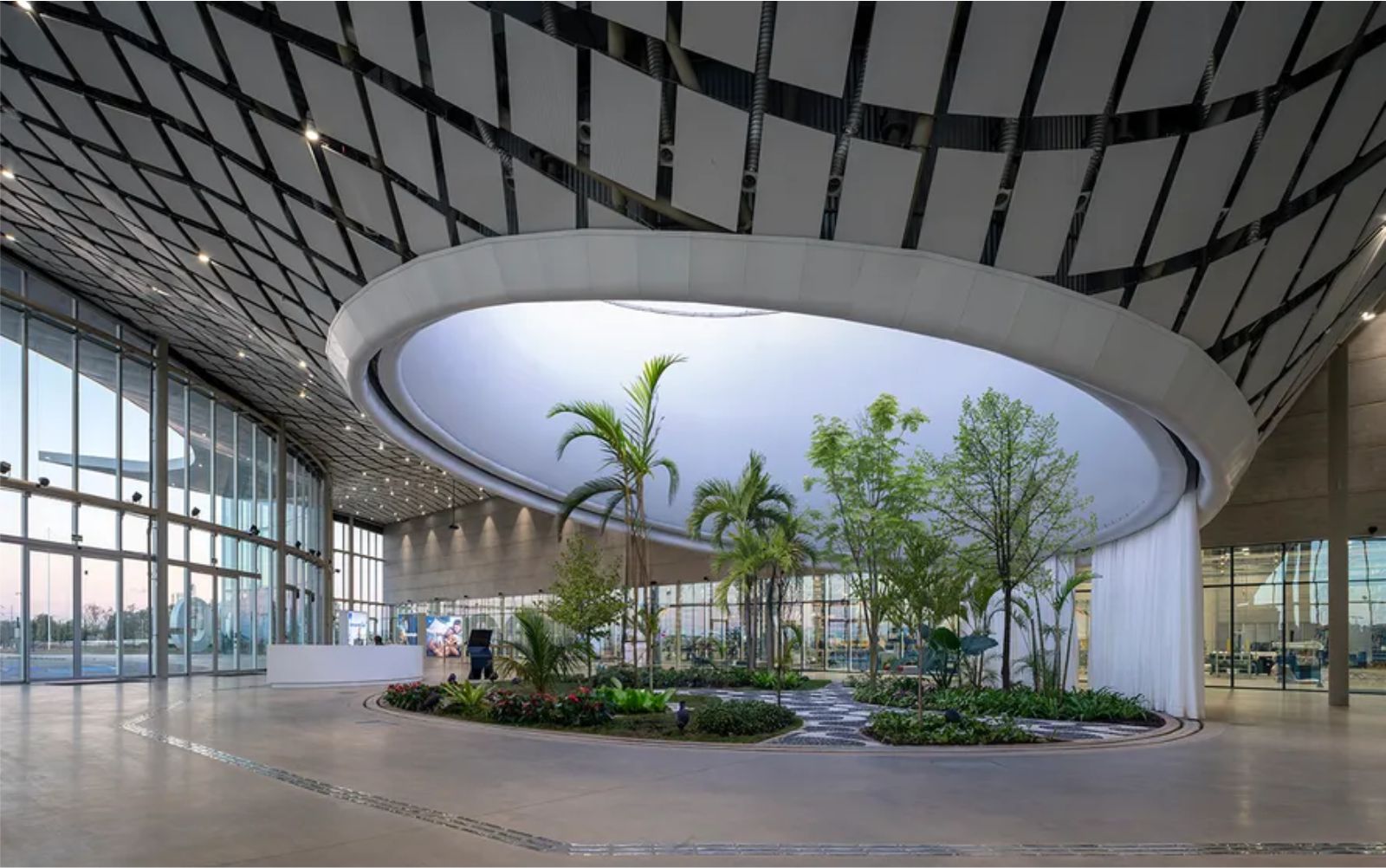
- Location: Limeira, Brazil
- Architect: Mario Cucinella Architects
- Project team: Mario Cucinella, Andrea Rossi, Michele Olivieri, Elena Biason, Maria Pazzaglia, Valerio Vincioni, Mariangela Toscano, Angelo Ungarelli, Alessio Naldoni, Augusta Zanzillo, Yuri Costantini, Andrea Genovesi, Alessia Monacelli, Guglielmo Barbieri, Sebastian Beldean
- Structural engineering: MF Minerbo Fuchs Engenharia S.A.
- MEP: MF Minerbo Fuchs Engenharia S.A.
- Landscape design: Balmori Associates
- Client: Nice S.p.A.
- Floor area: 20,000 sqm
- Year: 2023
- Photographs: Duccio Malagamba, Adriano Pacelli, Michele Olivieri, Courtesy of Mario Cucinella Architects


